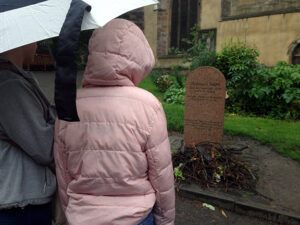Ann Gafke’s Teacher’s Pet, 325 E. Dripping Springs Rd, Columbia, MO 65202
Phone: (573) 443-0716 or Email: Contact Us
Register Online
A dog in Turkey waited five days outside a hospital for her hospitalized owner. They were reunited January 20.
According to this Associated Press story in the St. Louis Post-Dispatch, (http://bit.ly/3phILe0) the dog followed an ambulance to the hospital and waited outside. The daughter of the patient family took the dog home but said the dog would run off early each morning to return to the hospital.
We can help you build a loyalty bond with your dog. (https://dogschooling.com/virtual-dog-training/)
 The story mirrors the story in Edinburgh, Scotland, of Greyfriars Bobby. Bobby, a Skye Terrier, spent the last 14 years of his life lying at the grave of his master.
The story mirrors the story in Edinburgh, Scotland, of Greyfriars Bobby. Bobby, a Skye Terrier, spent the last 14 years of his life lying at the grave of his master.
Bobby has books, films, a museum exhibit, a statue, and his own grave marker to celebrate his loyalty. The rules of the cemetery in the 1870s prohibited a dog burial near the master’s grave. So, Bobby’s grave is at the entrance to the cemetery.
The picture (left) shows two visitors to Edinburgh at Bobby’s graver marker.



